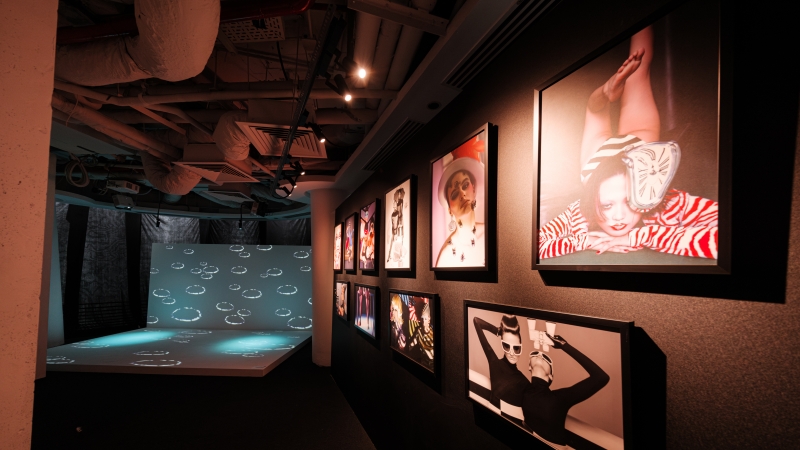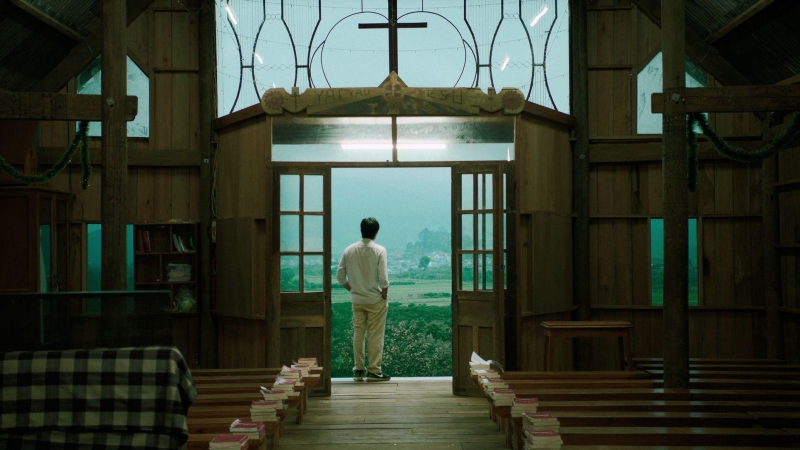The essence of traditional Chinese art
Peking Opera or Jingxi, is a genre of drama formed and strongly developed in Beijing during the reign of Emperor Qianlong of the Qing Dynasty, the most influential in China and known as "National Drama". Peking Opera often presents historical and struggle themes, most of the stories are taken from history and novels. The four artistic techniques performed in Peking Opera are singing, reading, acting, and fighting. It is a highly comprehensive art form, with singing, dancing, dialogue, martial arts, and symbolic movements.
Peking Opera, one of China's most classical and refined forms of theatrical art, emerged in the late 18th century during the Qing Dynasty. This was a period when Chinese culture and arts reached their peak, thanks to the strong interaction between local art forms and the support of the imperial court.

Peking Opera, a precious gem in the Chinese cultural treasury
The origins of Peking Opera stem from the combination of traditional art forms such as Kunqu (a musical from the Ming Dynasty), Huangmei Opera (a popular performance in southern China), and other folk melodies. The important event marking the birth of Peking Opera was in 1790, when art troupes from Anhui and Hubei provinces were invited to Beijing to perform at the birthday celebration of Emperor Qianlong. These performances attracted great attention and gradually developed into an independent art form.

This art creates a vivid picture of human life and soul.
By the 19th century, Peking Opera had become the dominant form of theater in Beijing, favored by royalty, aristocrats, and commoners. Peking Opera performances were not only a means of entertainment, but also a way to convey history, philosophy, and morality in Chinese society.
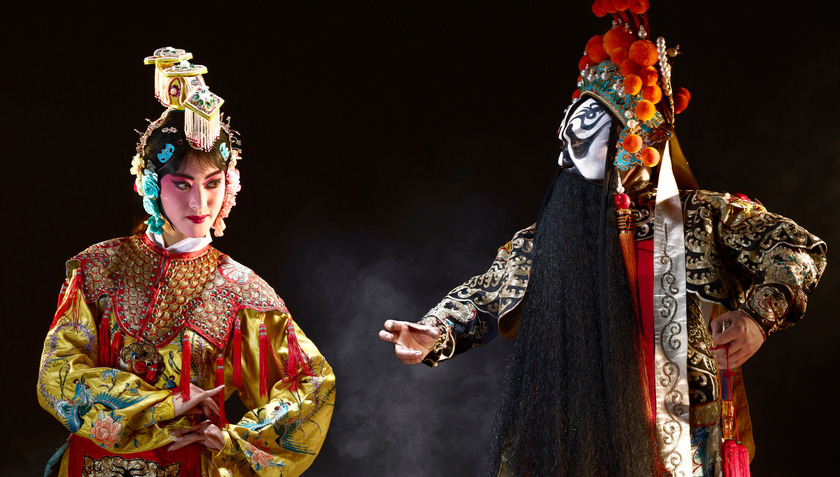
Every graceful movement, every up and down song carries the essence of stage art.
The foundation of performing arts is the reproduction of human behavior in fictional artistic conditions, that is, the actor plays a role and creates a character. The actor can build his creativity on the script but still must be faithful to the character created by the playwright. “Faithfulness” does not mean performing mechanically, but includes a lively “recreation”. It is through “recreation” that a competent actor will bring “living” life to the “dead” characters in the script.
Intangible cultural heritage, one of the ten great essences of China
Peking Opera is known for its harmonious combination of four main artistic elements: singing, dancing, dialogue, and martial arts. Each play is a vivid picture, recreating historical stories, legends, or profound philosophical lessons.
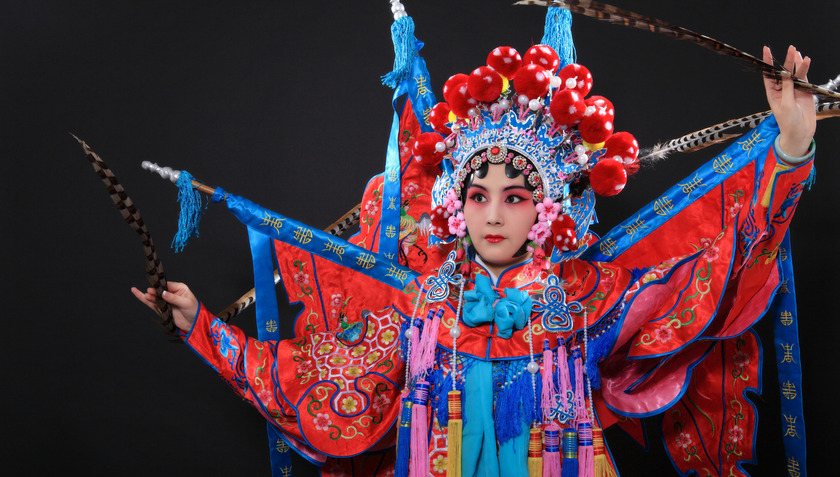
Peking opera is not only a form of entertainment but also a profound philosophy of life, reflecting the concept of good and evil, love and chivalry of Eastern people.
Actors on the Peking Opera stage do not appear in their original appearance, but disguise themselves according to the gender, personality, age, profession, and status of the role they play. Stage roles are divided into four categories: Sinh, Dan, Tinh, and Suu.
“Sinh” is the general term for male roles, divided into old student, martial student, and young student; “Dan” is the general term for female roles, divided into green-clothed (main role), flower player, boudoir player, knife-horse player, martial artist, Thai player, and old player; “Tinh” is also called “flower player”, often plays male roles with unusual personalities, qualities, or appearances, with loud voices and rough styles, divided into main roles, price-making, martial artist, second-class actress, and flower-making; “Suu” are comedic roles, often with white powder applied to the bridge of the nose, divided into literary suu, martial artist suu. The loyalty, beauty and ugliness, good and evil, honor and baseness of the characters can be expressed through the makeup on the faces of each role. Each role has its own way of performing, with its own characteristics in singing, reading, acting, and fighting skills.
During the development process, Peking Opera has formed a highly symbolic system of performance movements. For example: Using an oar to represent a boat, a horsewhip to represent a horse, actors do not need any props to perform movements such as going upstairs, going downstairs, opening doors. Although these movements are a bit exaggerated, they can bring a sense of realism to the audience.

Music plays an important role in Peking Opera, helping to portray the characters' emotions and personalities.
Peking Opera is an art form that is close to life. It contains profound meanings, attracting the audience. Most of the Peking Opera plays have life and inspiration from legendary plots. Like fairy tales, legends mixed with the wild history of classical Chinese novels. Therefore, watching Peking Opera is also a way to learn about the history and ancient culture of China.
The art of makeup in Peking Opera is very unique. The roles of “Sheng” and “Dan” must “draw eyebrows”, “raise eyebrows” and “draw eyeballs”, the roles of “Jing” and “Chou” must be drawn according to the play’s mask, for example, the loyal and brave roles must be drawn red, the cunning roles must be drawn white. Peking Opera costumes include python robes, military uniforms, arrow jackets, cloaks, etc. They all have unique styles and patterns, representing different social status and classes. At the same time, Peking Opera actors will also use different accessories and props. Such as fans, handkerchiefs, beards, etc., according to the character’s personality traits and the needs of the plot during the performance, to increase the liveliness and enjoyment of the performance.
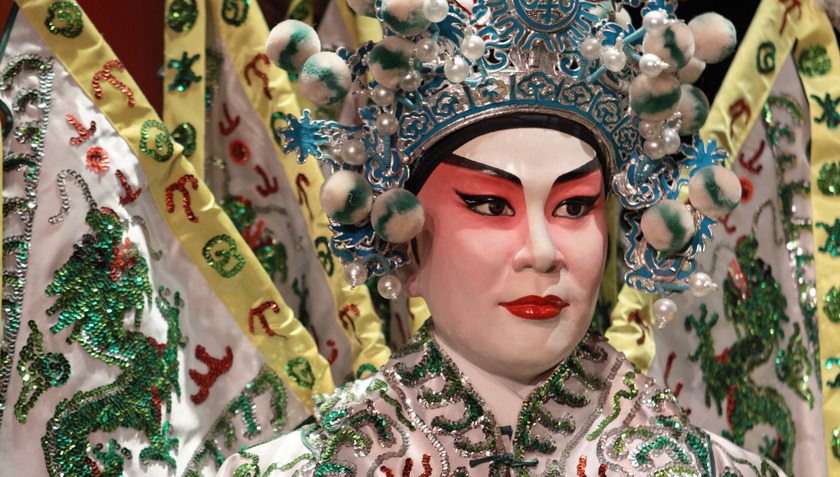
Makeup in Peking Opera has symbolic meaning, helping the audience easily identify the personality and role of each character.
The number of acts in Peking Opera is very large, it is said that there are up to 3,800 acts. Currently, the plays performed mainly include 3 types: Traditional plays, newly compiled historical plays and modern plays.
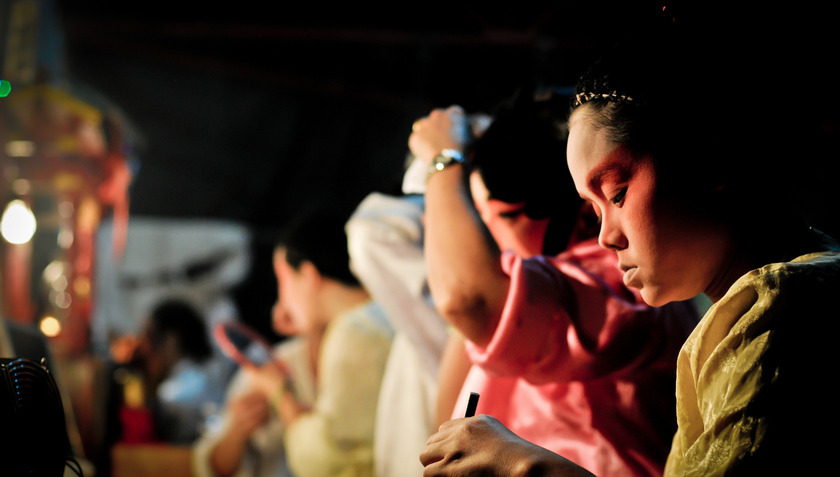
With a history spanning over 200 years, Peking Opera is not only an artistic symbol of China but also a valuable cultural asset of the world.
On November 16, 2010, Peking Opera was included in the "Representative List of the Oral and Intangible Cultural Heritage of Humanity". Peking Opera has traveled around the world and become an important means to introduce and spread traditional Chinese arts and culture.
Peking Opera, a precious gem in the treasure trove of Chinese culture, is not only a cultural heritage but also a colorful journey of discovery. Every Peking Opera performance is a wonderful visual and audio feast, immersing the audience in the magical world of the stage. Enjoying Peking Opera is not just watching a performance, but also an opportunity to gain a deeper understanding of Chinese culture, history and soul. This cultural heritage has transcended the limits of the stage to become an indispensable part of the soul of art lovers.






